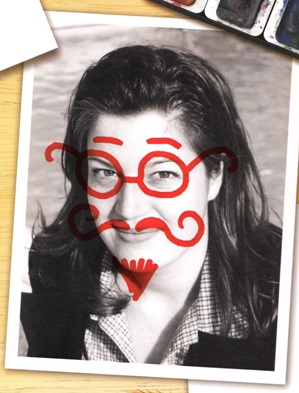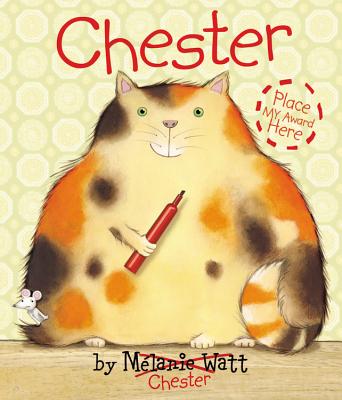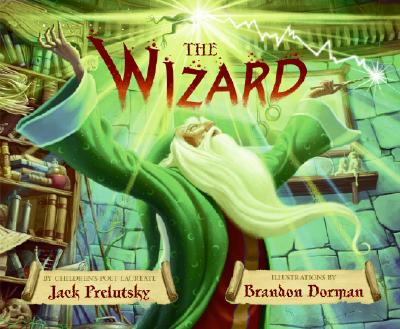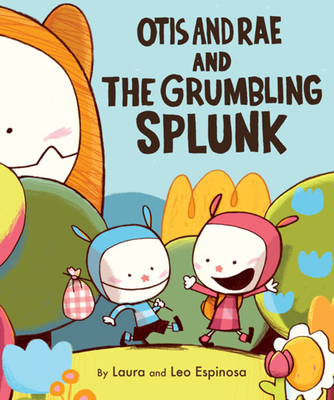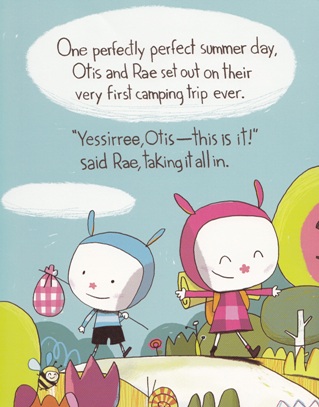We have a lot of affection for Mélanie Watt in our house for several reasons. To start with, she’s the first children’s author-illustrator that my daughter really became a fan of all on her own. Now, on a whole, I think my daughter has not-bad taste when it comes to kids books – with a few notable exceptions – but I also realize that my wife and I do a fair bit of work to make sure that she has relatively higher-class material to choose from. I’ve essentially spent the first five years of her life whispering in her ear, like her own personal Screwtape, directing her towards the books I want her to read and making her feel like she has a choice in the matter.
“Oh, OK, I guess you’ve got to pick between this Tomie dePaola or this Roald Dahl book… you know, these ones that you picked out. YOU did. All by yourself. No. No, I don’t know what happened to that princess book. No, forget about that, I think someone else took it. No. And it was ripped, so we’re not going to buy it. So, between these two, the two that YOU picked out, which one are we going to get? Great choices, by the way.”
Don’t get me wrong. I give in to her reading preferences A LOT and I try to listen, but I’m not going to stop fighting the good fight when I’ve spent this many years gently manipulating her for the greater good. (I wish that sounded less sinister, but, eh, what are you going to do? Welcome to parenthood.)
But I have to give my daughter credit. She found Mélanie Watt all on her own. On a trip to our local library around two years ago, she emerged from the stacks grasping onto a copy of a picture book called Chester by Mélanie Watt. She plopped it down in front of me and said, “I want this one. It’s funny.” And, with an impassioned plea like that, we just had to take it home.
And my daughter was right. It WAS funny. And she absolutely loved it. Chester has a very funny premise, which Mélanie Watt executes exceedingly well. The gist is that an author and illustrator named, coincidentally enough, Mélanie Watt is trying – operative word: trying – to draw a picture book about a mouse who lives in a house in the country, BUT a big, ego-driven cat named Chester has swiped a red marker and is editing the story to make himself the star. Chester is constantly arguing with Watt via his red marker – they bicker on the jacket flap copy, Chester edits her author bio, the cat even changes her dedication on the copyright page.
(Also, since my day-job is being an editor at a publishing company, the idea of someone wreaking that much havoc with a red pen is just inherently funny to me.)
The set-up is deliciously meta, but not in an inaccessible way. Sometimes when a kids book plays around with the idea of actually being a book, it can either get a little too cutesy with the premise OR it can get obsessed with parent-skewing in-jokes that fly right over your kid’s head. Some of the best examples of a meta kids book done right are The Three Pigs by David Wiesner, We Are in a Book by Mo Willems, and Duck! Rabbit! by Amy Krouse Rosenthal. I think Chester would make that list too.
Chester eventually ignites a war with his creator, which is an extremely fun sequence to read aloud. When he redraws a page, she fights back with her omniscient author powers and changes the scene or dresses him up in a pink tutu. It turns into this large-scale argument with a fictional character refusing to listen to its creator – which is a really hilarious concept – but, since the creator becomes such a big part of the story, she becomes a character as well. [read the rest of the post…]
{ 2 comments }
